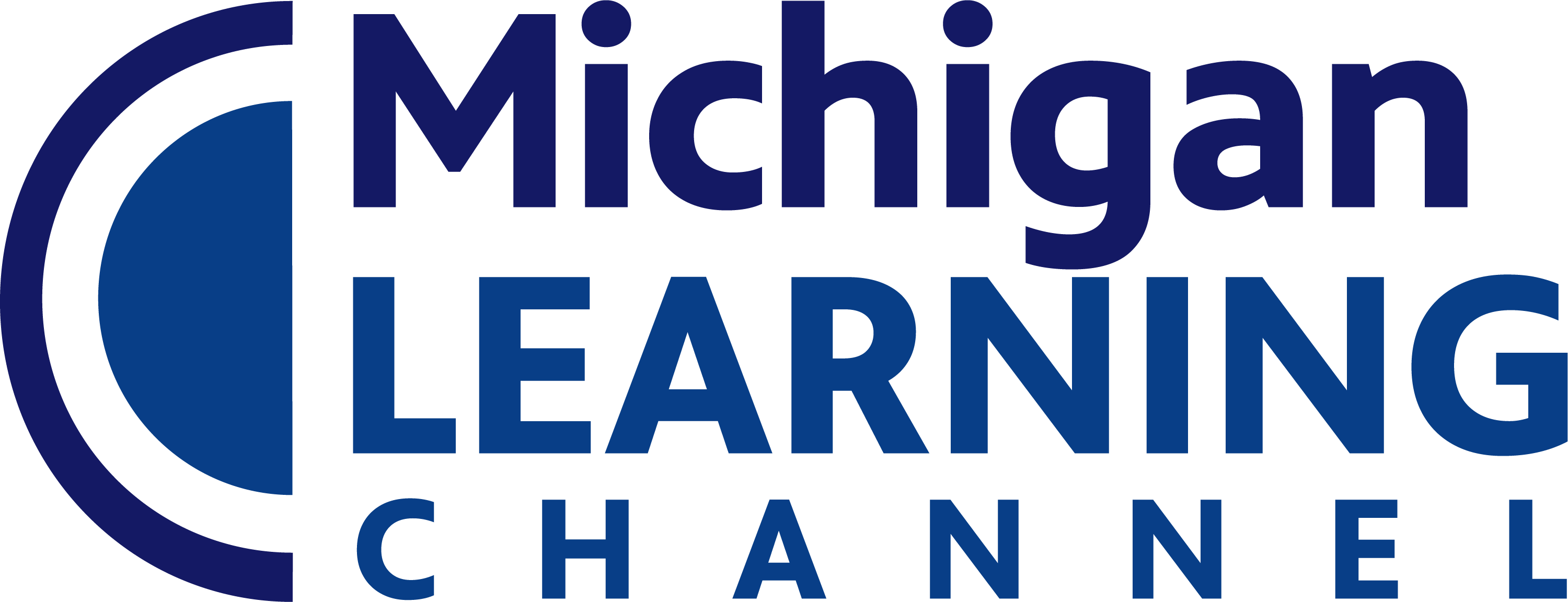Grades
Standard
Use statistics appropriate to the shape of the data distribution to compare center (median, mean) and spread (interquartile range, standard [...]
Interpret differences in shape, center, and spread in the context of the data sets, accounting for possible effects of extreme [...]
Use the mean and standard deviation of a data set to fit it to a normal distribution and to estimate [...]
Summarize categorical data for two categories in two-way frequency tables. Interpret relative frequencies in the context of the data (including [...]
Represent data on two quantitative variables on a scatter plot, and describe how the variables are related.*
Fit a function to the data; use functions fitted to data to solve problems in the context of the data. [...]
Informally assess the fit of a function by plotting and analyzing residuals.*
Verify experimentally the properties of dilations given by a center and a scale factor:
A dilation takes a line not passing through the center of the dilation to a parallel line, and leaves a [...]
The dilation of a line segment is longer or shorter in the ratio given by the scale factor.
Given two figures, use the definition of similarity in terms of similarity transformations to decide if they are similar; explain [...]
Use the properties of similarity transformations to establish the AA criterion for two triangles to be similar.
Prove theorems about triangles. Theorems include: a line parallel to one side of a triangle divides the other two proportionally, [...]
Use congruence and similarity criteria for triangles to solve problems and to prove relationships in geometric figures.
Understand that by similarity, side ratios in right triangles are properties of the angles in the triangle, leading to definitions [...]
Explain and use the relationship between the sine and cosine of complementary angles.
Use trigonometric ratios and the Pythagorean Theorem to solve right triangles in applied problems.
(+) Prove the Laws of Sines and Cosines and use them to solve problems.
(+) Understand and apply the Law of Sines and the Law of Cosines to find unknown measurements in right and [...]
(+) Derive the formula A = (1/2)ab sin(C) for the area of a triangle by drawing an auxiliary line from [...]
Identify and describe relationships among inscribed angles, radii, and chords. Include the relationship between central, inscribed, and circumscribed angles; inscribed [...]
Construct the inscribed and circumscribed circles of a triangle, and prove properties of angles for a quadrilateral inscribed in a [...]
Construct a tangent line from a point outside a given circle to the circle.
Derive using similarity the fact that the length of the arc intercepted by an angle is proportional to the radius, [...]
Derive the equation of a circle of given center and radius using the Pythagorean Theorem; complete the square to find [...]
Derive the equation of a parabola given a focus and directrix.
(+) Use special triangles to determine geometrically the values of sine, cosine, tangent for π/3, π/4 and π/6, and use [...]
(+) Use the unit circle to explain symmetry (odd and even) and periodicity of trigonometric functions.
Choose trigonometric functions to model periodic phenomena with specified amplitude, frequency, and midline.*
(+) Understand that restricting a trigonometric function to a domain on which it is always increasing or always decreasing allows [...]
(+) Use inverse functions to solve trigonometric equations that arise in modeling contexts; evaluate the solutions using technology, and interpret [...]
Prove the Pythagorean identity (sin A)^2 + (cos A)^2 = 1 and use it to find sin A, cos A, [...]
(+) Prove the addition and subtraction formulas for sine, cosine, and tangent and use them to solve problems.
Know precise definitions of angle, circle, perpendicular line, parallel line, and line segment, based on the undefined notions of point, [...]
Represent transformations in the plane using, e.g., transparencies and geometry software; describe transformations as functions that take points in the [...]
Given a rectangle, parallelogram, trapezoid, or regular polygon, describe the rotations and reflections that carry it onto itself.
Develop definitions of rotations, reflections, and translations in terms of angles, circles, perpendicular lines, parallel lines, and line segments.
Given a geometric figure and a rotation, reflection, or translation, draw the transformed figure using, e.g., graph paper, tracing paper, [...]
Use geometric descriptions of rigid motions to transform figures and to predict the effect of a given rigid motion on [...]
Use the definition of congruence in terms of rigid motions to show that two triangles are congruent if and only [...]
Explain how the criteria for triangle congruence (ASA, SAS, and SSS) follow from the definition of congruence in terms of [...]
Prove theorems about triangles. Theorems include: measures of interior angles of a triangle sum to 180 degrees; base angles of [...]
Prove theorems about parallelograms. Theorems include: opposite sides are congruent, opposite angles are congruent, the diagonals of a parallelogram bisect [...]
Prove theorems about lines and angles. Theorems include: vertical angles are congruent; when a transversal crosses parallel lines, alternate interior [...]
Make formal geometric constructions with a variety of tools and methods (compass and straightedge, string, reflective devices, paper folding, dynamic [...]
Construct an equilateral triangle, a square, and a regular hexagon inscribed in a circle.
Combine standard function types using arithmetic operations. For example, build a function that models the temperature of a cooling body [...]
(+) Compose functions. For example, if T(y) is the temperature in the atmosphere as a function of height, and h(t) [...]
Write arithmetic and geometric sequences both recursively and with an explicit formula, use them to model situations, and translate between [...]
Grades
Standard
Use statistics appropriate to the shape of the data distribution to compare center (median, mean) and spread (interquartile range, standard [...]
Interpret differences in shape, center, and spread in the context of the data sets, accounting for possible effects of extreme [...]
Use the mean and standard deviation of a data set to fit it to a normal distribution and to estimate [...]
Summarize categorical data for two categories in two-way frequency tables. Interpret relative frequencies in the context of the data (including [...]
Represent data on two quantitative variables on a scatter plot, and describe how the variables are related.*
Fit a function to the data; use functions fitted to data to solve problems in the context of the data. [...]
Informally assess the fit of a function by plotting and analyzing residuals.*
Verify experimentally the properties of dilations given by a center and a scale factor:
A dilation takes a line not passing through the center of the dilation to a parallel line, and leaves a [...]
The dilation of a line segment is longer or shorter in the ratio given by the scale factor.
Given two figures, use the definition of similarity in terms of similarity transformations to decide if they are similar; explain [...]
Use the properties of similarity transformations to establish the AA criterion for two triangles to be similar.
Prove theorems about triangles. Theorems include: a line parallel to one side of a triangle divides the other two proportionally, [...]
Use congruence and similarity criteria for triangles to solve problems and to prove relationships in geometric figures.
Understand that by similarity, side ratios in right triangles are properties of the angles in the triangle, leading to definitions [...]
Explain and use the relationship between the sine and cosine of complementary angles.
Use trigonometric ratios and the Pythagorean Theorem to solve right triangles in applied problems.
(+) Prove the Laws of Sines and Cosines and use them to solve problems.
(+) Understand and apply the Law of Sines and the Law of Cosines to find unknown measurements in right and [...]
(+) Derive the formula A = (1/2)ab sin(C) for the area of a triangle by drawing an auxiliary line from [...]
Identify and describe relationships among inscribed angles, radii, and chords. Include the relationship between central, inscribed, and circumscribed angles; inscribed [...]
Construct the inscribed and circumscribed circles of a triangle, and prove properties of angles for a quadrilateral inscribed in a [...]
Construct a tangent line from a point outside a given circle to the circle.
Derive using similarity the fact that the length of the arc intercepted by an angle is proportional to the radius, [...]
Derive the equation of a circle of given center and radius using the Pythagorean Theorem; complete the square to find [...]
Derive the equation of a parabola given a focus and directrix.
(+) Use special triangles to determine geometrically the values of sine, cosine, tangent for π/3, π/4 and π/6, and use [...]
(+) Use the unit circle to explain symmetry (odd and even) and periodicity of trigonometric functions.
Choose trigonometric functions to model periodic phenomena with specified amplitude, frequency, and midline.*
(+) Understand that restricting a trigonometric function to a domain on which it is always increasing or always decreasing allows [...]
(+) Use inverse functions to solve trigonometric equations that arise in modeling contexts; evaluate the solutions using technology, and interpret [...]
Prove the Pythagorean identity (sin A)^2 + (cos A)^2 = 1 and use it to find sin A, cos A, [...]
(+) Prove the addition and subtraction formulas for sine, cosine, and tangent and use them to solve problems.
Know precise definitions of angle, circle, perpendicular line, parallel line, and line segment, based on the undefined notions of point, [...]
Represent transformations in the plane using, e.g., transparencies and geometry software; describe transformations as functions that take points in the [...]
Given a rectangle, parallelogram, trapezoid, or regular polygon, describe the rotations and reflections that carry it onto itself.
Develop definitions of rotations, reflections, and translations in terms of angles, circles, perpendicular lines, parallel lines, and line segments.
Given a geometric figure and a rotation, reflection, or translation, draw the transformed figure using, e.g., graph paper, tracing paper, [...]
Use geometric descriptions of rigid motions to transform figures and to predict the effect of a given rigid motion on [...]
Use the definition of congruence in terms of rigid motions to show that two triangles are congruent if and only [...]
Explain how the criteria for triangle congruence (ASA, SAS, and SSS) follow from the definition of congruence in terms of [...]
Prove theorems about triangles. Theorems include: measures of interior angles of a triangle sum to 180 degrees; base angles of [...]
Prove theorems about parallelograms. Theorems include: opposite sides are congruent, opposite angles are congruent, the diagonals of a parallelogram bisect [...]
Prove theorems about lines and angles. Theorems include: vertical angles are congruent; when a transversal crosses parallel lines, alternate interior [...]
Make formal geometric constructions with a variety of tools and methods (compass and straightedge, string, reflective devices, paper folding, dynamic [...]
Construct an equilateral triangle, a square, and a regular hexagon inscribed in a circle.
Combine standard function types using arithmetic operations. For example, build a function that models the temperature of a cooling body [...]
(+) Compose functions. For example, if T(y) is the temperature in the atmosphere as a function of height, and h(t) [...]
Write arithmetic and geometric sequences both recursively and with an explicit formula, use them to model situations, and translate between [...]


